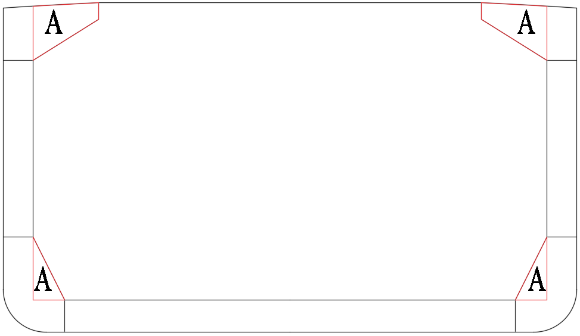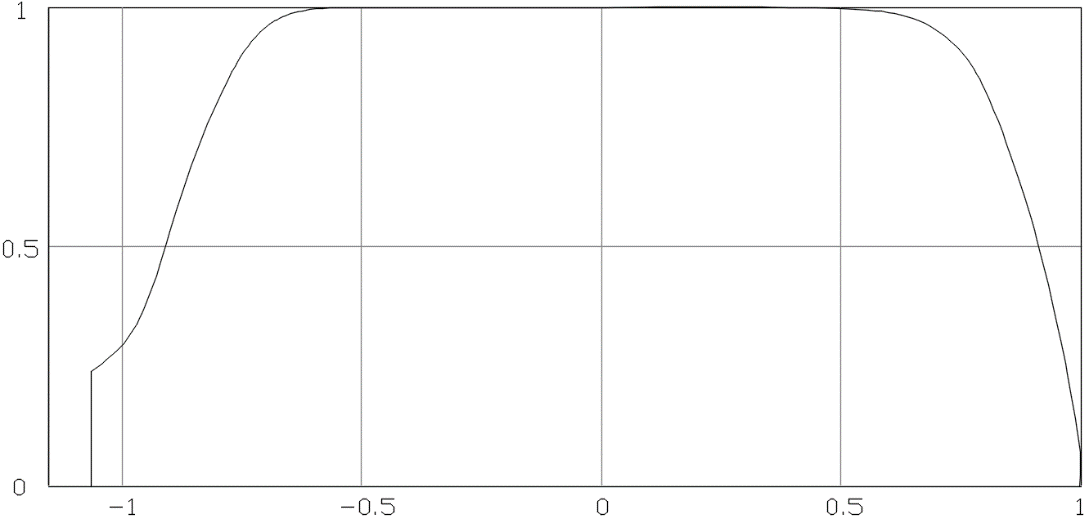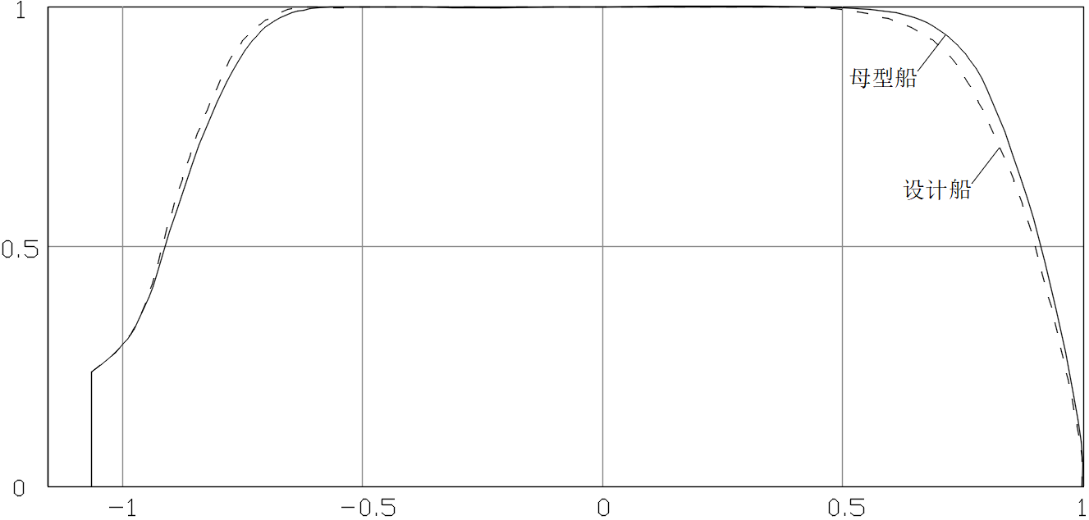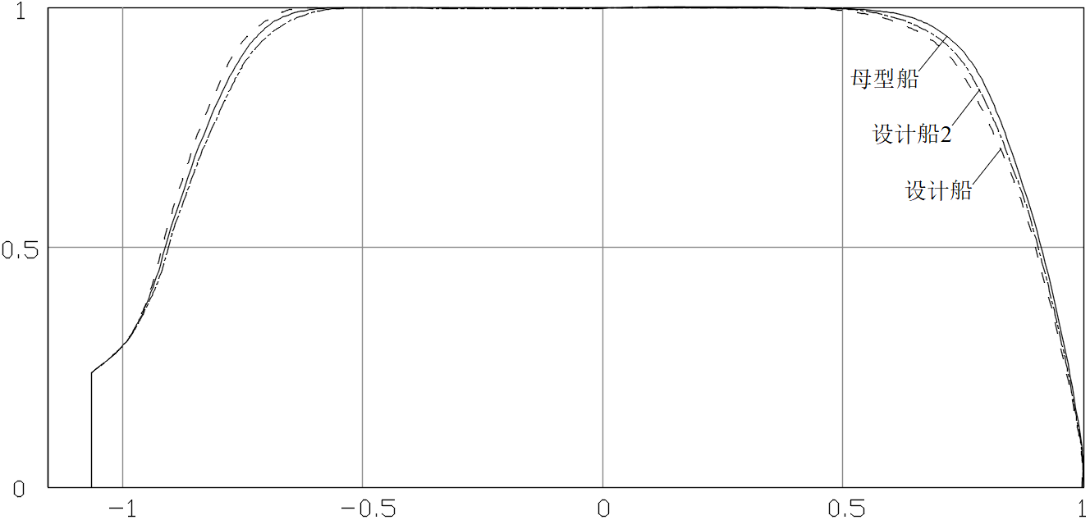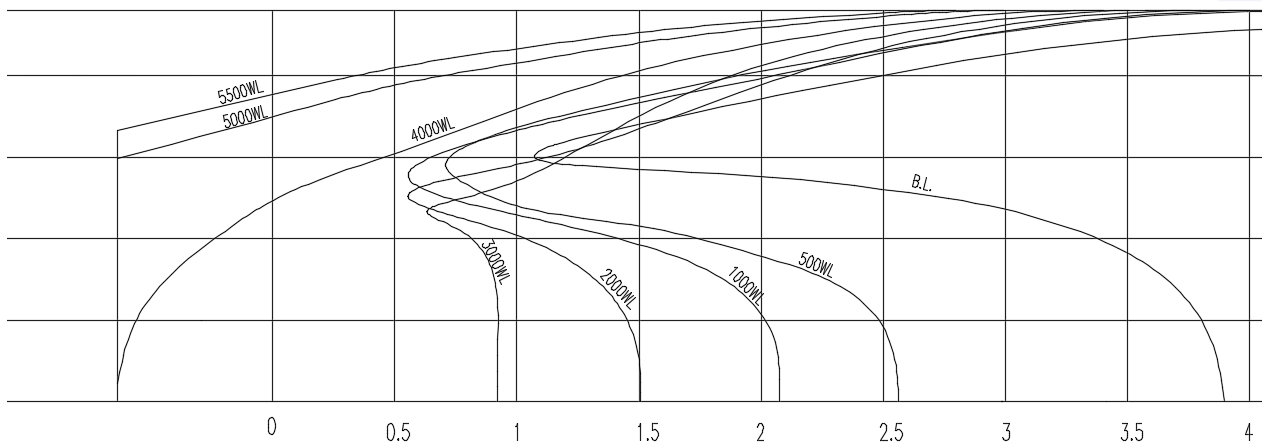9000吨三峡水运新通道散货船方案设计毕业论文
2020-02-18 00:34:50
摘 要
2018年长江干线货物通过量达26.9亿吨,随着我国“十三五”规划将建设长江经济带纳入区域协同发展战略,长江航运有望再创佳绩。作为长江中下游地区大型企业主要生产材料的煤炭、铁矿石等工业原料,主要产地位于长江中上游地区,由于散货船普遍具备装卸方便、货物装载量大、航行适应能力强等特点,其依旧是当前内河航运运输此类原料的主要船型。由此可以看出,在未来一段时期内,长江航运对散货船仍有较大的需求量。
船舶总体方案设计是整个船舶设计的主线,对后期的局部设计有非常大的影响。因此,为保持长江流域航运的稳健发展,制定并出台一套能够引导长江流域船型主尺度设计的指导意见显得尤为重要。自交通运输部2015年发布三峡水运新通道代表船型以来,整个长江航运正朝着船型标准化的方向不断发展进步。本文也正是基于此进行本散货船的方案设计。
本设计船为9000吨内河散货船,主要装运煤炭、铁矿石、谷物等散货以及钢板。本设计将重点进行了以下内容:
(1)以母型船以及经验公式为基础,确定额定载货量下的船舶主尺度。
(2)以母型船型线图为基础,首先使用传统手工算法直接得到设计船的型线图,之后采用软件算法,利用Rhino以及Maxsurf软件,以两种不同的建模方法对设计船进行建模,进而得到设计船的型线图。其三维模型将用于之后的相关计算。
(3)以规范法规条例为基础,考虑可能的实际需求对主要布置进行设计,同时考虑长江流域江况等外部环境因素对上层建筑进行布置设计,最后将上述设计结果补充至三维模型中。
(4)以前面的三维模型为基础,充分利用Maxsurf软件各个模块对设计船总体性能(包括静水力特性、稳性、抗沉性、快速性/适航性)进行计算、模拟、评估。
(5)首先以规范法规条例为基础,计算得到设计船主要构件的尺寸。由于受航道条件所限,为保证一定容量的货舱容积,本设计船将采用大开口形式,因此有必要对其进行相应的强度校核。利用Maxsurf与Patran/Nastran,将上述确定的尺寸属性赋予到设计船模型之中,对货舱区域强度以及船舶总纵强度进行计算、校核,并根据计算结果,对不满足强度要求的部位进行适当修改。
(6)以船舶阻力以及船舶推进知识为基础,对设计船的螺旋桨以及舵进行设计。后期若有余力,将尝试对设计船回转性能进行简单模拟分析。
综上,本设计将在自身能力范围之内,尽可能充分利用现有条件,争取得到一个较为理想的设计方案。(此电子版已修正纸质版第4章中少数图表标号错误问题)
关键词:三峡水运新通道;Maxsurf;性能校核;Patran/Nastran;结构强度校核
Abstract
In 2018, the cargo volume of the Yangtze River trunk line reached 2.69 billion tons. Along with the 13th Five-Year Plan of China, the construction of the Yangtze River Economic Belt will be incorporated into the strategy of regional coordinated development, and the Yangtze River shipping is expected to achieve good results again. Coal, iron ore and other industrial raw materials, which are the main production materials of large enterprises in the middle and lower reaches of the Yangtze River, are mainly produced in the middle and upper reaches of the Yangtze River. Because bulk carriers generally have the characteristics of convenient handling, large cargo loading capacity and strong navigation adaptability, they are still the main types of ships for inland waterway transportation of such raw industrial materials. It can be seen that in the future, the Yangtze River shipping still has a large demand for bulk carriers.
The overall design of a ship is the main line of the whole ship design, which has a great influence on the local design in the later stage. Therefore, in order to maintain the steady development of shipping in the Yangtze River Basin, it is particularly important to issue a set of guidelines that can guide the design of the main dimensions of ship types in the Yangtze River Basin. Since the Ministry of Transport issued representation of ship form in the new channel of Three Gorges waterway in 2015, the whole Yangtze River shipping is developing towards the standardization of ship form. This paper is also based on this to carry out the design of the bulk carrier.
The design ship is a 9000-ton inland bulk carrier, which mainly carries bulk cargo such as coal, iron ore, grain and steel plate. This design will focus on the following contents:
(1) Based on the parent ship and empirical formula, the main dimensions of the ship under rated cargo volume are determined.
(2) On the basis of the parent ship's profile, the traditional manual algorithm is used to get the design ship's lines plan directly. Then the Rhino and Maxsurf software are used to model the design ship with two different modeling methods, and then the design ship's lines plan is obtained. Its three-dimensional model will be used for subsequent related calculations.
(3) Based on the codes and regulations, the design of the main layout is carried out considering the possible actual needs, and the external environmental factors such as the river conditions in the Yangtze River Basin are taken into account. Finally, the above design results are supplemented to the three-dimensional model.
(4) Based on the previous three-dimensional model, Maxsurf software modules are fully utilized to calculate, simulate and evaluate the overall performance of the designed ship, including hydrostatic characteristics, stability, sinking resistance, rapidity/seaworthiness.
(5) Firstly, the dimensions of the main components of the design ship are calculated on the basis of the codes and regulations. Due to the limitation of channel conditions, in order to ensure a certain capacity of cargo hold volume, the design ship will adopt the form of large opening, so it is necessary to check its strength accordingly. Maxsurf and Patran/Nastran are used to assign the above dimension attributes to the design ship model. The strength of cargo hold area and the longitudinal strength of the ship are calculated and checked. According to the calculation results, the parts that do not meet the strength requirements are modified appropriately.
(6) Based on the knowledge of ship resistance and ship propulsion, the propeller and rudder of the designed ship are designed. If I have the ability to design more in the later stage, a simple simulation analysis will be attempted on the rotary performance of the designed ship.
To sum up, this design will make full use of the existing conditions within its own capacity, and strive for a more ideal design scheme.
Key words: New channel of Three Gorges waterway; Maxsurf; Performance check; Patran/Nastran; Structural calculation
目 录
摘 要 I
Abstract II
目 录 1
第1章 绪论 1
1.1 研究背景 1
1.2 国内外研究现状 1
1.3 目的和意义 2
1.4 设计思路 2
1.4.1 主尺度确定 2
1.4.2 型线设计 2
1.4.3 总布置设计 3
1.4.4 静力学及稳性计算 3
1.4.5 结构计算 3
1.4.6 螺旋桨设计 3
第2章 全船说明书 4
2.1 船型、航区及载货量 4
2.2 船员人数 4
2.3 船级 4
2.4 主尺度 4
2.5 船型系数 4
2.6 航速与续航力 4
2.7 货舱舱容 5
2.8 总布置 5
2.9 船体结构 5
2.10 锚泊设备 5
2.11 动力设备 5
2.11.1 主机 5
2.11.2 齿轮箱 5
2.11.3 螺旋桨 6
2.11.4 舵 6
2.12 其他设备 6
2.12.1 救生设备 6
2.12.2 信号设备 6
2.12.3 消防设备 7
第3章 主尺度确定 8
3.1 排水量初步估算 8
3.2 船长估算 8
3.2.1 统计公式法 8
3.2.2 母型船估算法 9
3.3 船宽、型深、吃水估算 9
3.3.1 统计公式法 9
3.3.2 母型船估算法 9
3.4 方形系数估算 10
3.5 重量校核 10
3.5.1 钢料重量 10
3.5.2 舾装重量 10
3.5.3 机电设备重量 11
3.5.4 校核 11
3.6 性能校核 12
3.6.1 舱容校核 12
3.6.2 快速性初步校核 15
3.6.3 稳性初步校核 15
3.6.4 横摇周期估算 15
3.6.5 最小干舷初步校核 16
3.6.6 尺度比校核 16
3.6.7 方形系数校核 17
第4章 型线设计 18
4.1 手工设计 18
4.1.1 绘制横剖面面积曲线 18
4.1.2 绘制半宽水线图 21
4.1.3 绘制横剖线图 26
4.1.4 绘制纵剖线图 27
4.1.5 检验 28
4.1.6 舷弧 28
4.1.7 梁拱 29
4.1.8 绘制水上部分轮廓 31
4.1.9 补充型值表 32
4.1.10 汇总 33
4.2 软件设计 33
4.2.1 方法一:分曲面建模 33
4.2.2 方法二:整体建模 36
第5章 总布置设计 40
5.1 主体舱室划分 40
5.1.1 货舱 40
5.1.2 首尖舱 40
5.1.3 尾尖舱 40
5.1.4 机舱 40
5.2 双层底布置 41
5.3 液舱布置 41
5.3.1 燃油舱 41
5.3.2 滑油舱 41
5.3.3 淡水舱 41
5.3.4 压载水舱 41
5.4 上层建筑划分 42
5.4.1 甲板板 42
5.4.2 尾楼甲板 42
5.4.3 起居甲板 42
5.4.4 驾驶甲板 42
5.4.5 罗经甲板 42
5.5锚泊设备 42
5.6 上层建筑建模 43
5.7 典型液舱舱容要素计算 43
第6章 静力学及稳性计算 45
6.1 静水力曲线 45
6.2 稳性计算 50
6.2.1 横摇角计算 50
6.2.2 复原力臂及动稳性臂计算 53
6.2.3 最小倾覆力臂计算 57
6.2.4 全速回航倾侧力臂计算 59
6.2.5 完整稳性汇总表 59
6.2.6 其他稳性计算 59
6.3 抗沉性计算 61
6.4 快速性计算 62
第7章 结构计算 69
7.1 概述 69
7.2 板架 69
7.2.1 船底板 69
7.2.2 舭列板 69
7.2.3 舷侧板 69
7.2.4 内底板 69
7.2.5 甲板 70
7.2.6 平板龙骨 71
7.2.7 横舱壁 71
7.3 骨材 71
7.3.1 实肋板 71
7.3.2 水密实肋板 71
7.3.3 中桁材 72
7.3.4 旁桁材 72
7.3.5 船底纵骨及内底纵骨 72
7.3.6 舷侧强肋骨 73
7.3.7 舷侧纵桁 73
7.4 结构框架建模 73
7.5 板架局部应力计算 75
7.5.1 建模概述 76
7.5.2 舷侧板架 76
7.5.3 船底板架 79
7.6 总纵弯曲应力计算 83
7.6.1 总纵弯矩计算 83
7.6.2 建模分析 84
7.7 结构计算小结 88
第8章 螺旋桨及舵设计 89
8.1 相关系数确定 89
8.1.1 伴流分数 89
8.1.2 推力减额分数 89
8.1.3 相对旋转效率 89
8.1.4 船身效率 89
8.1.5 其他 90
8.2 设计船相关参数 90
8.2.1 设计船参数 90
8.2.2 设计船有效功率估算 90
8.3 预备计算 93
8.4 初步设计 93
8.5 终结设计 94
8.6 确定设计航速 95
8.7 空泡校核 96
8.8 舵 98
8.8.1 概述 98
8.8.2 舵面积 98
8.8.3 舵高 98
8.8.4 舵宽 98
8.8.5 展弦比 98
8.8.6 平衡系数 99
第9章 结语 100
参考文献 101
致 谢 104
第1章 绪论
1.1 研究背景
长江经济带,包含11个省份,面积约205万平方公里,其GDP达到全国GDP的40%、其人口达到全国人口的40%。2016年9月,经中共中央政治局审议通过的《长江经济带发展规划纲要》正式印发;2017年12月,在党的十九大报告中, 两次提到了“长江经济带”。长江经济带的建设,在接下来的一段时期内将成为国家建设的重点。
2018年长江干线货物通过量达26.9亿吨,同比增长7.6%;集装箱吞吐量1750万TEU,同比增长6.1%;三峡枢纽通过量1.44亿吨,同比增长3.9%。可以看出,长江航线的兴衰对于当前整个中国的经济发展起着至关重要的作用。
以上是毕业论文大纲或资料介绍,该课题完整毕业论文、开题报告、任务书、程序设计、图纸设计等资料请添加微信获取,微信号:bysjorg。
相关图片展示:
